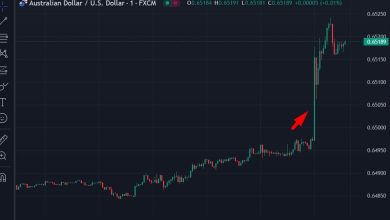3 Big Reasons Why Exchange Traded Funds Have Become “Mainstream” Among Investors

Kathrin Ziegler | Digital vision | Getty Images
Demand for ETFs exceeds demand for mutual funds
At a high level, ETFs are investment funds that typically hold a basket of many securities such as stocks and bonds, much like mutual funds.
However, unlike mutual funds, ETFs are traded on stock exchanges. Like stocks, they can be traded throughout the day and their stock prices rise and fall during this time. In contrast, mutual fund trades are executed once a day and all investors get the same price.
Investors withdrew more than $900 billion from mutual funds in 2022 and invested about $600 billion in ETFs, according to Morningstar. This net difference in dollar flows – about $1.5 trillion – was the largest on record.
“There’s been a huge, huge dispersion,” said Bryan Armour, director of passive strategies research for North America at Morningstar.
The last time mutual fund flows eclipsed ETF flows was 2013, he said.
“Overall, the trend has been toward ETFs and away from mutual funds,” Armor said.
ETF growth has also been global: total assets outside the U.S. market stood at $2.7 trillion at the end of 2022, a five-fold increase in a decade, according to Morningstar data. Total global ETF assets could exceed $20 trillion by 2026, according to PwC.
Asset managers have tried to take advantage of this demand by launching more funds. There were 419 U.S. ETF fund creations in 2022, compared to 197 mutual funds, according to Morningstar.
“We’ve really started to see over the last ten years an acceleration in the demand for ETFs and, more recently, the supply of ETFs,” Rosenbluth said.
That said, ETFs still have a way to go before their total assets exceed those of mutual funds. Mutual funds hold about $17 trillion, or about a 70% market share compared to ETFs, according to Morningstar. Mutual funds are also relatively anchored in 401(k) plans at the moment, an important reserve of overall U.S. savings, experts say.
3 big reasons why ETFs became popular
There are three big reasons why investors, overall, have favored ETFs over mutual funds, according to experts.
For one thing, ETFs are generally more tax efficient, experts say.
When asset managers buy and sell securities within mutual funds, these transactions can trigger capital gains taxes for the funds’ investors. (This is largely the case for “actively” managed mutual funds. More on this later.)
Due to the structure of ETFs, American investors largely escape these taxes, experts say.
“That’s a huge advantage for ETFs,” Armor said. “This gives investors control over when they realize capital gains and when they don’t.”
These tax benefits are important for investors in taxable accounts, but less so for those investing in tax-advantaged retirement accounts.
ETFs also tend to have lower costs than mutual funds — an attractive feature as investors have generally become more price conscious, Armor said.
The asset-weighted average annual fee for mutual funds and ETFs was 0.37% in 2022, less than half the cost 20 years earlier, according to Morningstar data. Asset-weighted fees take into account investor behavior, demonstrating that investors are looking for cheaper funds.
ETFs do not have distribution fees, such as 12b-1 fees, that are typically associated with some mutual funds. However, investors can pay commissions to buy and sell ETFs, which reduces the fee differential.
A recent University of Iowa study found that the average annual cost of “passive” mutual funds is 0.45% of investors’ assets, more than double the 0.21% ETF average. .
A passive, or index, mutual fund or ETF differs from an actively managed fund. The first follows a market index, such as the S&P500 stock index, rather than engaging in active stock or bond selection to try to beat the market. Active management generally costs more because of this stock selection.
The third big reason investors have turned to ETFs is something of a “misuse of language,” Armor said.
Many investors think of ETFs as passive investing. There are also passive mutual funds, but investors may not know this. As passive investing has become more popular, ETFs have taken advantage of this common misconception.
“People confuse ETFs with passive investing all the time,” Armor said.
cnbctv18-forexlive





